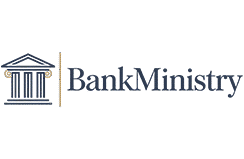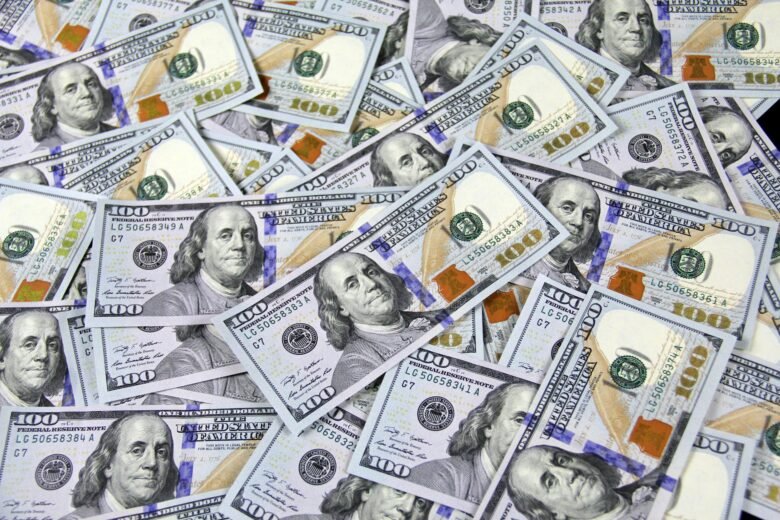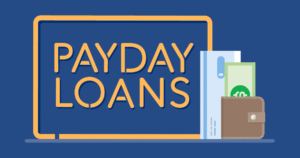Introduction to Microfinance in the USA
Microfinance, a term often associated with developing nations, has become a vital tool for financial inclusion in the United States. Micro finance banks in USA provide small loans, typically ranging from a few hundred to $50,000, to underserved entrepreneurs, startups, and small businesses that struggle to access traditional banking services. These institutions, including nonprofit lenders, community development financial institutions (CDFIs), and crowdfunding platforms, empower individuals—particularly women, minorities, veterans, and low-income entrepreneurs—to start or grow businesses, fostering economic self-sufficiency and community development.
In the U.S., microfinance addresses a critical gap: many small business owners face barriers such as limited credit history, insufficient collateral, or inability to secure loans from conventional banks. According to the U.S. Small Business Administration (SBA), over 5,500 small businesses received $86.4 million in microloans in 2023, with 80% of loans from 2014–2018 going to women-owned, veteran-owned, minority-owned, or low-income businesses. This article explores the landscape of microfinance in the USA, detailing key programs like the SBA Microloan Program, nonprofit platforms like Kiva, and major CDFIs, while providing practical guidance on accessing these resources.
Why Microfinance Matters in the USA
Microfinance is more than just small loans; it’s a lifeline for underserved communities. Traditional banks often require extensive credit histories, substantial collateral, or high minimum loan amounts, which exclude many small business owners. Microfinance banks bridge this gap by offering flexible eligibility criteria, smaller loan amounts, and technical assistance to help borrowers succeed. For example, the SBA’s Microloan Program targets startups (24% of 2024 loans went to businesses operating for two years or less) and underserved groups, while platforms like Kiva provide 0% interest loans through crowdfunding.
The impact is significant: microloans enable entrepreneurs to purchase inventory, equipment, or working capital, driving job creation and economic growth. In 2007, Federal Reserve Chairman Ben Bernanke highlighted the role of CDFIs in fostering financial inclusion, noting their ability to serve low-income communities during economic uncertainty. As the microfinance market grows—projected to reach $394.8 billion globally by 2027—its role in the U.S. continues to expand, offering hope to those excluded from traditional finance.
Understanding Microfinance Banks and Institutions
What Are Microfinance Banks?
Microfinance banks in the USA are not always traditional banks but include a range of institutions like CDFIs, nonprofit lenders, and crowdfunding platforms. These organizations provide small-scale financial services—microloans, microsavings, and microinsurance—to individuals and businesses with limited access to conventional banking. Unlike traditional banks, microfinance institutions prioritize social impact, often serving women, minorities, veterans, and low-income entrepreneurs.
Key characteristics of microfinance banks include:
- Small Loan Sizes: Loans typically range from $500 to $50,000, with averages around $13,000 for SBA microloans and $15,000 for Kiva loans.
- Flexible Eligibility: Many institutions accept borrowers with limited credit history or collateral, focusing on business potential and repayment ability.
- Technical Assistance: Lenders often provide training, financial education, or mentorship to ensure borrower success.
- Community Focus: Microfinance targets underserved areas, including rural and economically distressed regions, to promote local economic development.
Types of Microfinance Institutions in the USA
The U.S. microfinance landscape includes several types of institutions, each with unique models:
- SBA Intermediary Lenders: Nonprofit organizations and CDFIs that distribute SBA microloans (up to $50,000, 8–13% interest) to small businesses and nonprofit childcare centers.
- Nonprofit Crowdfunding Platforms: Organizations like Kiva offer 0% interest loans crowdfunded by individuals globally, targeting underserved entrepreneurs.
- CDFIs: Certified by the U.S. Treasury’s CDFI Fund, these institutions (e.g., Pacific Community Ventures, Grameen America) provide microloans and other services to low-income communities.
- For-Profit MFIs: Emerging players, such as those backed by major banks like Citigroup, focus on profitability while serving underbanked populations.
The Role of CDFIs in Microfinance
Community Development Financial Institutions (CDFIs) are pivotal in U.S. microfinance. As noted in Bernanke’s 2007 speech, CDFIs serve low-income communities by offering loans, investments, and financial education. Many SBA microloan intermediaries are CDFIs, and organizations like Pacific Community Ventures and Grameen America are prominent examples. CDFIs often receive funding from the SBA, the CDFI Fund, or private investors, enabling them to offer affordable loans and technical support.
For example, Grameen America, founded in 2008, has disbursed $1.75 billion in microloans to 133,300 women entrepreneurs across 15 U.S. cities, focusing on financial education and credit-building. Similarly, Pacific Community Ventures supports small businesses in California with microloans and mentorship, aligning with the SBA’s mission to empower underserved groups.
Major Microfinance Programs in the USA
SBA Microloan Program: A Government-Backed Solution
The SBA Microloan Program, detailed on the SBA’s official website (sba.gov), is a cornerstone of U.S. microfinance. Administered through nonprofit intermediary lenders, it provides loans up to $50,000 to small businesses and nonprofit childcare centers. Here’s a deep dive into the program’s mechanics:
Program Overview
- Loan Amount: Up to $50,000, with an average of $13,000.
- Uses: Working capital, inventory, supplies, furniture, fixtures, machinery, or equipment. Loans cannot be used for debt repayment or real estate purchases.
- Interest Rates: Typically 8–13%, varying by lender.
- Repayment Terms: Up to 6 years.
- Collateral: Intermediaries often require collateral (e.g., equipment purchased with the loan) and a personal guarantee.
Eligibility
- Business Type: For-profit small businesses and certain nonprofit childcare centers operating in the U.S. or its territories.
- Target Audience: Startups, women-owned, veteran-owned, minority-owned, and low-income businesses. In 2014–2018, 80% of microloans went to these groups.
- Credit Flexibility: Intermediaries may accept borrowers with limited credit history or bad credit, focusing on repayment ability and business potential.
- Requirements: Vary by lender but typically include a business plan, financial statements, tax returns, and collateral documentation.
Application Process
- How to Apply: Borrowers apply directly through an SBA-approved intermediary lender, not the SBA itself. The SBA’s microlender list (sba.gov/funding-programs/loans/microloans/list-microlenders) allows users to filter lenders by state.
- Required Documents:
- Personal identification (e.g., driver’s license).
- Business license and operating agreements.
- Business plan outlining financial needs.
- Personal and business tax returns (at least two years).
- Balance sheet, income statement, and cash flow projections.
- List of collateral and existing debts.
- Timeline: Approval takes 1–3 months, with funds disbursed after signing a loan agreement.
Recent Updates
The Economic Aid to Hard-Hit Small Businesses, Nonprofits, and Venues Act (effective June 17, 2024) enhanced the program:
- Increased Intermediary Borrowing: Up to $3 million per year (aggregate $7 million), with a first-year limit of $750,000.
- Grants: Minimum base grant of 25% of an intermediary’s SBA loan balance (up to 30% in certain years), plus 5% bonus grants for serving economically distressed or rural areas.
- Impact: In 2023, the SBA disbursed $86.4 million to over 5,500 businesses, with 24% of 2024 loans supporting startups.
Strengths and Weaknesses
- Strengths: Government backing ensures reliability; flexible eligibility supports underserved groups; technical assistance from intermediaries enhances borrower success.
- Weaknesses: A 2019 GAO report noted weaknesses in performance measurement, such as unclear definitions for “low-income” borrowers and inconsistent data collection, limiting impact assessment.
Kiva: Crowdfunding Microfinance for the Underserved
Kiva, highlighted in Investopedia’s article on major MFIs, is a San Francisco-based nonprofit that facilitates crowdfunded microloans in the U.S. and 80+ countries. Its U.S. program is a unique alternative to traditional microfinance.
Program Overview
- Loan Amount: Up to $15,000, typically for small businesses, education, or health-related needs (e.g., clean water).
- Interest Rate: 0%, making it highly affordable compared to SBA loans (8–13%).
- Repayment Terms: 6–36 months.
- Uses: Business expenses like inventory, equipment, marketing, or working capital.
Eligibility
- Target Audience: Underserved entrepreneurs, including women, minorities, immigrants, and low-income individuals.
- Requirements: A business plan, community impact, and a compelling story for crowdfunding. Limited credit history is acceptable.
- Process: Borrowers apply through Kiva or partners (e.g., local nonprofits, CDFIs). Once approved, their loan campaign is crowdfunded by individuals lending as little as $25. Funds are disbursed via partners like PayPal.
Strengths and Weaknesses
- Strengths: 0% interest reduces borrower costs; global crowdfunding model fosters community support; flexible eligibility supports diverse entrepreneurs.
- Weaknesses: Smaller loan sizes ($15,000 max) compared to SBA ($50,000); crowdfunding success depends on campaign visibility; not government-backed.
Impact
Kiva has facilitated over $1.9 billion in loans globally, with a 96% repayment rate. In the U.S., it supports thousands of entrepreneurs, particularly in underserved communities, through partnerships with cities like Los Angeles and New York.
Other Major Microfinance Institutions
Investopedia’s article lists Grameen America and Pacific Community Ventures among the top MFIs, both of which play significant roles in U.S. microfinance.
Grameen America
- Overview: Founded in 2008 as an offshoot of Bangladesh’s Grameen Bank, it serves women entrepreneurs in 15 U.S. cities with microloans, savings programs, and financial education.
- Impact: Disbursed $1.75 billion to 133,300 women, focusing on credit-building and economic empowerment.
- Model: Group lending encourages peer support and repayment, with loans often under $10,000 at competitive rates.
Pacific Community Ventures
- Overview: Founded in 1998, this California-based CDFI provides microloans and mentorship to small businesses, often in underserved areas.
- Role: Likely an SBA microloan intermediary, aligning with the SBA’s mission to support local economies.
- Focus: Community development through small-scale financing and technical assistance.
How to Access Microfinance in the USA
Step-by-Step Guide to Applying for a Microloan
Securing a microloan requires careful preparation and understanding of the lender’s requirements. Here’s a practical guide to accessing microfinance in the USA:
1. Identify Your Needs
- Determine Loan Purpose: Specify whether you need funds for inventory, equipment, working capital, or other eligible uses. For example, a food truck owner might need $10,000 for kitchen equipment, while a retail startup might need $5,000 for inventory.
- Assess Loan Size: SBA microloans offer up to $50,000, while Kiva loans cap at $15,000. Choose a program based on your funding needs.
2. Research Microfinance Providers
- SBA Microloans: Visit sba.gov/funding-programs/loans/microloans/list-microlenders to find intermediaries by state. For example, filtering for “All” states provides a comprehensive list downloadable in CSV format.
- Kiva: Explore Kiva’s platform (kiva.org) to browse borrower profiles or apply directly. Check for local partners in your area (e.g., nonprofits in Los Angeles or New York).
- CDFIs: Search for CDFIs like Grameen America or Pacific Community Ventures through the CDFI Fund’s website or local business networks.
3. Prepare Your Application
- Gather Documents:
- Personal identification (e.g., driver’s license, Social Security number).
- Business license, EIN, and operating agreements.
- Business plan detailing your goals, market, and financial needs.
- Financial statements (balance sheet, income statement, cash flow projections).
- Tax returns (personal and business, typically two years).
- List of collateral (e.g., equipment, inventory) and existing debts.
- Craft a Narrative: For Kiva, a compelling story about your business and community impact can boost crowdfunding success.
- Seek Technical Assistance: Many intermediaries and Kiva partners offer free workshops or counseling to refine your application.
4. Submit and Follow Up
- SBA Intermediaries: Contact your chosen lender to submit your application. Approval takes 1–3 months, depending on the lender’s process.
- Kiva: Create a profile on Kiva’s platform and launch your crowdfunding campaign. Engage with lenders through updates to ensure funding success.
- Monitor Progress: Stay in touch with your lender for updates, additional document requests, or technical assistance.
5. Manage Your Loan
- Repayment: SBA loans require monthly payments with 8–13% interest over up to 6 years. Kiva loans are 0% interest, repaid over 6–36 months.
- Technical Support: Leverage training or mentorship from intermediaries to ensure business success and timely repayment.
- Build Credit: Consistent repayments can improve your credit score, unlocking future financing opportunities.
Practical Examples of Microloan Use
To illustrate, consider these real-world scenarios:
- Food Truck Startup: Maria, a single mother in Chicago, secures a $20,000 SBA microloan to purchase a used food truck and kitchen equipment. She works with a local CDFI, which provides financial literacy training, helping her manage cash flow and repay the loan over 5 years at 9% interest.
- Retail Expansion: Jamal, a minority entrepreneur in Atlanta, uses a $10,000 Kiva loan to buy inventory for his clothing boutique. His compelling crowdfunding campaign attracts 200 lenders, each contributing $25, and he repays the 0% interest loan over 24 months.
- Childcare Center: A nonprofit childcare center in rural Texas secures a $30,000 SBA microloan to renovate its facility, ensuring compliance with safety regulations. The intermediary lender provides technical assistance to streamline operations.
Broader Context: The Microfinance Ecosystem
Economic and Social Impact
Microfinance banks in the USA play a critical role in economic and social development:
- Job Creation: By funding small businesses, microloans create jobs, particularly in underserved communities. For example, the SBA’s 2023 microloans supported over 5,500 businesses, many of which hired local employees.
- Financial Inclusion: Programs like Kiva and Grameen America empower women, minorities, and immigrants, addressing systemic barriers to traditional banking.
- Community Development: CDFIs and SBA intermediaries focus on economically distressed and rural areas, revitalizing local economies.
Regulatory and Policy Support
The U.S. government supports microfinance through:
- SBA: Provides funding and oversight for the Microloan Program, ensuring intermediaries serve underserved groups.
- CDFI Fund: Certifies and funds CDFIs, enabling them to offer microloans and other services. Bernanke’s 2007 speech emphasized the Federal Reserve’s role in supporting CDFIs through research and partnerships.
- Legislation: The Economic Aid Act (2024) increased intermediary borrowing limits and grants, enhancing the SBA program’s reach.
Challenges in Microfinance
Despite its benefits, microfinance faces challenges:
- Funding Constraints: Intermediaries rely on limited SBA or private funding, which may restrict loan availability.
- High Interest Rates: SBA loans (8–13%) can be costly compared to Kiva’s 0% model, though both are more affordable than predatory lenders.
- Data Gaps: The 2019 GAO report criticized the SBA’s inconsistent data collection, hindering program evaluation.
- Risk Management: Lending to borrowers with limited credit history carries higher default risks, requiring robust technical assistance.
Opportunities for Growth
The microfinance sector is poised for growth:
- Technology: Platforms like Kiva leverage crowdfunding and digital tools to reach more borrowers and lenders.
- For-Profit Involvement: Major banks like Citigroup are entering microfinance, potentially increasing capital but raising concerns about profiteering.
- Policy Enhancements: Continued government support, such as increased SBA funding or CDFI grants, can expand access.
Safety Precautions and Common Mistakes to Avoid
Safety Precautions
When seeking microfinance, exercise caution to ensure financial safety:
- Verify Lender Legitimacy: Only work with SBA-approved intermediaries or reputable platforms like Kiva. Check the SBA’s microlender list or the CDFI Fund’s directory.
- Understand Terms: Review interest rates, repayment terms, and collateral requirements before signing. For example, SBA loans require personal guarantees, which could impact personal assets if you default.
- Consult Professionals: Speak with a financial advisor or SBA counselor before applying to ensure the loan aligns with your business goals.
- Avoid Predatory Lenders: Be wary of high-interest lenders (e.g., payday loans) that target vulnerable borrowers. Microfinance banks like CDFIs offer ethical alternatives.
Common Mistakes to Avoid
- Overborrowing: Borrowing more than you can repay can lead to financial strain. Calculate your repayment capacity based on cash flow projections.
- Inadequate Preparation: Submitting incomplete applications or weak business plans can lead to rejection. Work with intermediaries for guidance.
- Ignoring Technical Assistance: Many borrowers skip free training or mentorship, missing opportunities to strengthen their business.
- Neglecting Repayment: Late payments can damage your credit and limit future financing. Set up automatic payments or reminders to stay on track.
Comparing Microfinance Options
To help you choose, here’s a comparison of key microfinance options in the USA:
| Feature | SBA Microloan Program | Kiva | Grameen America |
| Loan Amount | Up to $50,000 (avg. $13,000) | Up to $15,000 | Typically under $10,000 |
| Interest Rate | 8–13% | 0% | Competitive (varies) |
| Repayment Term | Up to 6 years | 6–36 months | Varies by loan |
| Eligibility | Small businesses, nonprofits | Underserved entrepreneurs | Women entrepreneurs |
| Collateral | Required (varies) | Not typically required | Group lending model |
| Application | Through intermediaries | Online via Kiva platform | Through local branches |
| Support | Technical assistance | Crowdfunding support | Financial education |
| Funding Source | SBA-backed | Crowdfunded | Nonprofit and grants |
Choosing the Right Option
- SBA Microloans: Best for businesses needing larger loans ($20,000–$50,000) with structured repayment and government backing.
- Kiva: Ideal for smaller loans ($5,000–$15,000) with no interest, especially for entrepreneurs with compelling stories.
- Grameen America: Suited for women entrepreneurs seeking small loans and community support.
Case Studies: Success Stories in U.S. Microfinance
Case Study 1: Maria’s Food Truck (SBA Microloan)
Maria, a single mother in Chicago, dreamed of starting a taco truck but lacked the capital and credit history to secure a bank loan. She applied for a $20,000 SBA microloan through a local CDFI, which required a business plan, two years of tax returns, and equipment as collateral. The CDFI provided financial literacy training, helping Maria create a budget and cash flow projections. With the loan, she purchased a used truck and kitchen equipment, launching her business in 2023. Maria now employs two part-time staff and is on track to repay her 9% interest loan over 5 years, building her credit for future financing.
Case Study 2: Jamal’s Boutique (Kiva)
Jamal, a minority entrepreneur in Atlanta, needed $10,000 to stock his clothing boutique but was rejected by banks due to limited credit. He applied for a Kiva loan, creating a compelling profile about his community-focused business. Within two weeks, 200 lenders crowdfunded his loan, each contributing $25. Jamal used the funds to purchase inventory, boosting sales during the holiday season. He’s repaying the 0% interest loan over 24 months, using Kiva’s platform to share updates with his lenders, fostering a sense of community support.
Case Study 3: Rural Childcare Center (SBA Microloan)
A nonprofit childcare center in rural Texas needed $30,000 to renovate its facility to meet safety regulations. Through an SBA intermediary, the center secured a microloan at 10% interest, using existing equipment as collateral. The intermediary provided technical assistance to streamline operations, ensuring compliance with state regulations. The renovation allowed the center to serve 20 additional children, creating three new jobs and strengthening the local economy.
read more – startup business loan rates
government loan for small business
Future Trends in U.S. Microfinance
Technological Advancements
- Digital Platforms: Crowdfunding platforms like Kiva demonstrate the power of technology in microfinance. Future innovations may include AI-driven credit assessments or blockchain for transparent lending.
- Mobile Access: Mobile apps for loan applications and repayments are increasing accessibility, especially in rural areas.
For-Profit Growth
- Major banks like Citigroup are entering microfinance, potentially increasing capital but raising concerns about high interest rates. The balance between profit and social impact will shape the industry’s future.
Policy Support
- Continued government support, such as increased SBA funding or CDFI grants, will expand microfinance access. The 2024 Economic Aid Act is a step in this direction, with higher intermediary borrowing limits.
Focus on Underserved Communities
- Microfinance will continue targeting women, minorities, veterans, and rural entrepreneurs, aligning with national goals for equity and inclusion.
read more – best banks for small businesses
small business checking account features
Frequently Asked Questions
What is a microfinance bank in the USA?
A microfinance bank in the USA is an institution, often a nonprofit or CDFI, that provides small loans (up to $50,000), microsavings, or microinsurance to underserved entrepreneurs and small businesses. Examples include SBA intermediaries, Kiva, and Grameen America.
How do I apply for a microloan in the USA?
For SBA microloans, contact an intermediary lender via sba.gov/funding-programs/loans/microloans/list-microlenders. For Kiva, apply online at kiva.org. Prepare a business plan, financial documents, and collateral (if required). Approval takes 1–3 months.
What are the interest rates for microloans?
SBA microloans typically charge 8–13% interest, while Kiva loans are 0% interest. Rates vary by lender and program, so compare options carefully.
Who is eligible for microfinance in the USA?
Eligible borrowers include small businesses, startups, and nonprofit childcare centers, especially women-owned, minority-owned, veteran-owned, or low-income businesses. Requirements vary but often include a business plan and repayment ability.
Disclaimer: This content is for informational purposes only. Always consult a qualified financial professional for advice and decisions regarding loans and business financing.



